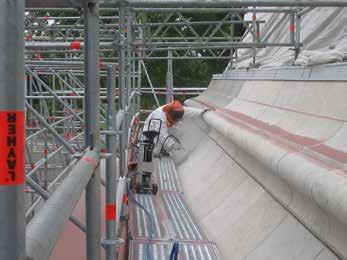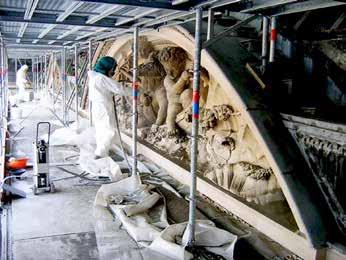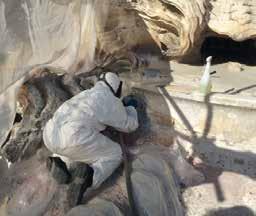
3 minute read
THE CLEANING PROCESS. Ibix
Caterina Giovannini
info@ibix.it www.ibix.it
Advertisement
THE CLEANING PROCESS
[ This article was taken from QA_A05N04 ] The cleaning is a delicate process, which is achieved balancing the needed effectiveness with the potential damage. This means identifying an operating method to safeguard the specificity of each intervention. The cleaning consists in the removal of unwanted material from the surface of an architec tural object. This is done for its preservation or in order to improve its appearance. Being irreversible, this is a particularly difficult phase. An improper operation might cause an irreparable damage to the artifact, compromising the integrity of important materials for the determination of its historical significance and even causing an acceleration of the degradation already in progress. The deposits which are usually cleaned are mainly: the products of the alteration of build ing materials, atmospheric particulate matter, vandalistic writings and graffiti, dust, salt efflorescence, partially or totally soluble encrustations, layers of intentionally applied ma terials which are no longer appropriate nor functional, infestations of plants, dropping of animals, etc.


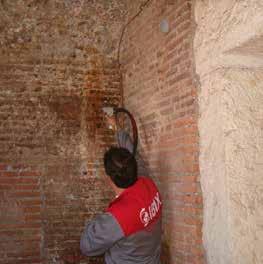
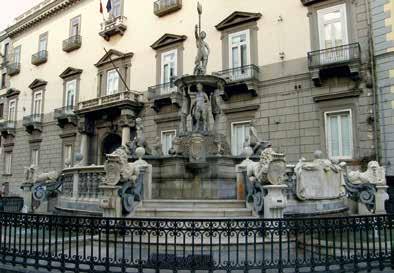
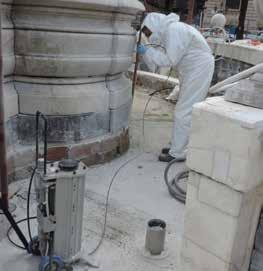
Because of these features and because of the particular nature and the heterogeneity of the substances to be removed, every valuable architecture and every cultural asset rep resents a unique case. Therefore, if an intervention of conservation is decided, the least invasive procedure is needed, in order to preserve the object in the best possible way. Fundamental to ensure the correct approach is therefore an accurate determination of the methods to be used to carry on the cleaning intervention. The criteria to be considered in order to identify the best method are: selectivity, efficiency, controllability, gradualness and accuracy. As far as the most usual cleaning methods, we can mention: chemical, mechanical, water cleaning (by pressure, misting, etc) and aero-mechanical. The technique of the selective micro-aero-abrasion allows to gently remove from stone artifacts of historic and artistic value the residuals and deposits caused by air pollution, preserving the noble patina and the historical films. In view of all the above, this kind of cleaning is characterized as particularly suitable for conservative interventions on histori cally and architecturally valuable artifacts. In particular, IBIX aero-cleaning machines are characterized by their selectivity and deli cacy, because with them it is possible to act on different adjustment parameters: working pressure - adjustable from very low values (0,2 bar) - the media flow and the type of inci -
dence on the surface, other than the chemical composition of the aggregate and its grain size. Furthermore, IBIX makes available a special tool, specifically designed for restora tion: HELIX, the gun featuring the helicoidal vortex. This tool allows, with the nozzle being equal, to increase the tangential contact area while maintaining a uniform and calibrated action of the aggregate on the surface affected. This means increasing the distance of the operator from the surface; minimizing the in vasiveness of the intervention without losing the regularity and the homogeneity of the cleaning; avoiding that the operator turns to interventions of continuous corrections, which could lead to a permanent loss of layers to be retained.



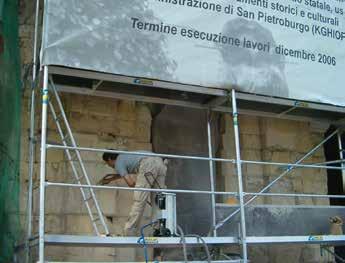
The IBIX method can be applied to various materials of historical constructions. Claybricks, bricks, modanati architettonici, tiles, terracotta tiles, natural stones thus ensuring a great operational versatility. Another strength of the IBIX method is the use of chemically inert and non-toxic materials, such as carbonates - sodium bicarbonate and calcium car bonate - and the almandine mineral, a very hard and lowly friable stone which can increase the effectiveness of the cleaning while maintaining maximum selectivity. For these reasons, the IBIX method has already found use in the conservation works of some of the most important monuments of the world: the Eiffel Tower, the Louvre muse um, the Catherine Palace in St. Petersburg, the historic walls of Malta, the Trajan’s Forums in Rome, a few buildings on the Capitol Hill in Washington and many others.
